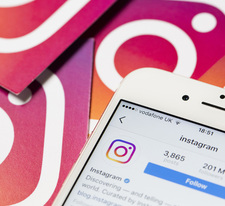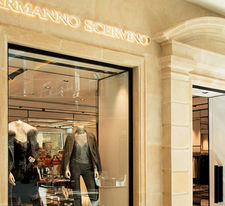So advanced
part 1 part 2 part 3 part 4 part 5
PLEASES – DOES NOT PLEASE
According to Cushman&Wakefield estimates, a rapid increase in household debt was recorded in the first half of 2018: against the background of a continuing decline in income, Russian residents use loans to maintain consumption levels.

The crisis continues to change the retail market in Russia, and a return to the previous model of consumption, according to experts, is impossible in principle. According to McKinsey & amp; Company, 57% of Russian consumers have become more likely to make purchases on promotions and special offers. Although these customers continue to purchase products of their favorite brands, but in smaller quantities, and are increasingly waiting for sales. It is this generation in Russia that remains one of the factors of the growth of trade via the Internet and new formats of brand promotion.
However, much less clothes, shoes and accessories began to be bought all over the world. Bloomberg notes again and again that customers no longer want to "impress" and "dress up", and the new generation chooses simple, functional and high-quality clothes that need to be changed much less often. As a result, iconic brands like Guess, Gap, Michael Kors, Abercrombie & Fitch and others are closing hundreds of stores in the US. In order to buy not online, but to go to the mall, customers have fewer and fewer reasons, and social networks are becoming the new Klondike.

This trend, as mentioned above, will continue to determine the future of the market, the key buyers of which are the Internet generation Y and the even more technological, fast and anti-globalist next generation, the young generation Z, FCG is convinced.
Already today, Russian buyers go to the network "for the price" and the assortment, and to "real" stores "for the atmosphere. According to a Ford survey, the shopping process in general brings people more joy than the purchase itself. More and more respondents agree that a physical trip to the store is becoming a luxury nowadays, as it requires the most valuable thing in the life of a modern person, – time. This was confirmed by more than 54% of respondents aged 18 to 29 years and 46% of respondents aged 30 to 44 years. At the same time, 56%, according to Sheryl Connelly, a specialist in global consumer trends and forecasting at Ford, said they would prefer to overpay for a product rather than buy it from a company that, in their opinion, harms society.

Respondents also noted that when they make a purchase, they think that the purchased item will please them much more than it actually happens (51% of respondents). The most frustrations bought things bring to the residents of India - 78% of respondents in this country agreed with the statement. Residents of Australia, the USA, Canada, the UK and Germany are much more pleased with their purchases - less than half of the disappointed people have gathered here, and in Germany there are only 33% of them. Residents of China, the Middle East and India believe that they need to be more restrained when it comes to shopping, over 70% of respondents in these countries answered this way, with China boasting the largest number of shopaholics, 84% of residents admitted to the problem. Residents of Canada, the USA, Australia, Great Britain and Germany, who have long experienced a boom in reckless consumption, make purchases more rationally – here, less than 40% of respondents admitted in an effort to satisfy the purchasing instinct at any cost. The Germans are the most prudent in shopping: only 33% of German residents regret rash purchases.

Olga Valchuk, CEO of "Regionevelopment", however, notes that it is impossible to talk about new trends in the promotion and perception of brands in terms of opposition. "Like any new phenomenon in life, digital promotion does not sweep away everything in its path, but uses existing practices, choosing those that remain relevant," the expert reports. For example, fashion houses Chanel and Gucci attract new creative directors in order to keep up with the times and not lose the young audience of millennials. The use of digital, active work in social networks, the creation of their own memes and the use of other fashionable things in the field of promotion, as well as the willingness of large reputable brands to speak the language of the current young audience have borne fruit: Gucci managed to increase sales by 16%, and Chanel became one of the 15 most beloved brands of millennials thanks to the involvement of young models, the creation of comics and video platforms, where the story of the House is told in a language understandable to Generation Z.

"In general," the expert continues, "the history of the formation of promotion tools is primarily the history of democratization and bringing brands closer to the audience. Today, even the most luxury brands are not afraid to make fun of themselves and play with the consumer, inviting him to play with him. So, the same Chanel House has released a collection of casual T-shirts with a large Chanel logo, ironically about the large number of similar fake clothes produced in Asia. The brand seems to offer to play those who understand, in a kind of postmodern game, the process of which is understandable only to the initiated. This is a new concept of a closed club of the very era of generation Z. This generation is not only more solvent, but also more advanced and knowledgeable. Today, it is no longer enough to simply put a logo on a thing; millennials, unlike zero buyers, will not be lured by this. The new generation of buyers needs not only to feel part of a closed circle of consumers, but also to participate in the creative process itself, to become part of the brand team, to feel their involvement.
To be continued.
Text:Ekaterina Reutskaya
Photo: shutterstock











